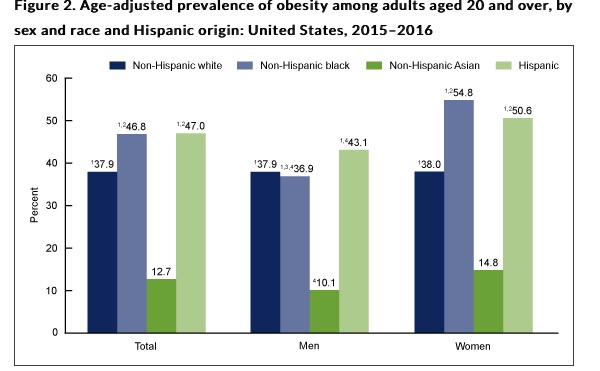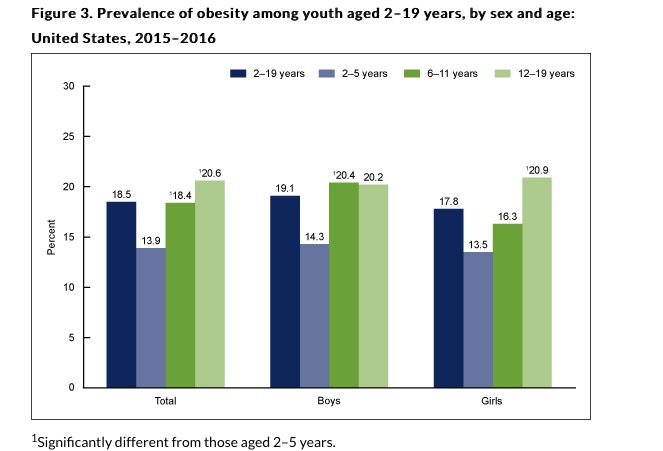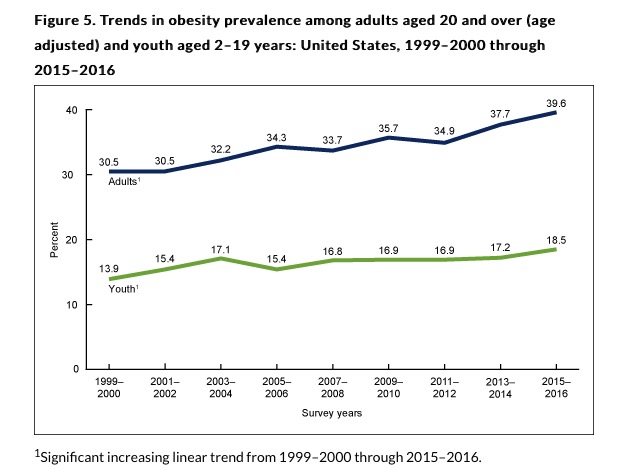
In the latest report on the topic, the National Center for Health Statistics (NCHS) paints a rather depressing picture of the status of the nation's obesity prevalence. In brief, in 2015-2016, just about 40 percent of American adults and nearly 19 percent of youth qualified as obese. These data reflect an increase since the previous report on the 2013-14 stats.
The information is derived from the National Health and Nutrition Examination Survey (NHANES) — a yearly survey that involves actual interviews and measurements of about 5000 persons per year. Obesity in adults was determined as a BMI of 30 or more for adults, and in youth as a BMI greater than the 95th percentile of age and gender-matched growth charts.
Analysis of the data from adults revealed that non-Hispanic Asian Americans had the lowest prevalence of obesity, while Hispanic and non-Hispanic black adults had the highest levels, as shown in the chart below.

For younger Americans, obesity prevalence varied by age, as in the chart below:

The lowest prevalence was seen in the 2-5-year-old group in both sexes.
Overall, the prevalence of obesity in both adults and youth have shown an increasing trend since 1999, as depicted below:

As this graph plainly indicates, the data from 2015-16 fit with the increasing prevalence pattern in both adults and youth. However, the NCHS report points out that the increases in both age groups between the 2013-14 and 2015-16 surveys were not statistically significant — and perhaps might indicate a real slowing of the increased prevalences.
Further, the fact that the obesity prevalence in the 2-5-year-old group was significantly less than in older youth might indicate the beginnings of a trend to maintain a lower weight profile — that parents are paying attention to the health risks associated with obesity and are trying to prevent their offspring from entering that category.
Whether these positive possibilities bear fruit regarding a plateauing of obesity prevalences in both adults and youth, only time will tell.



